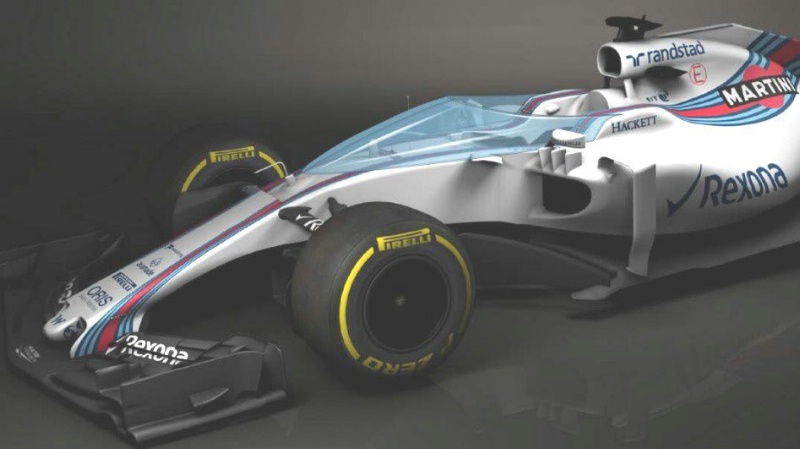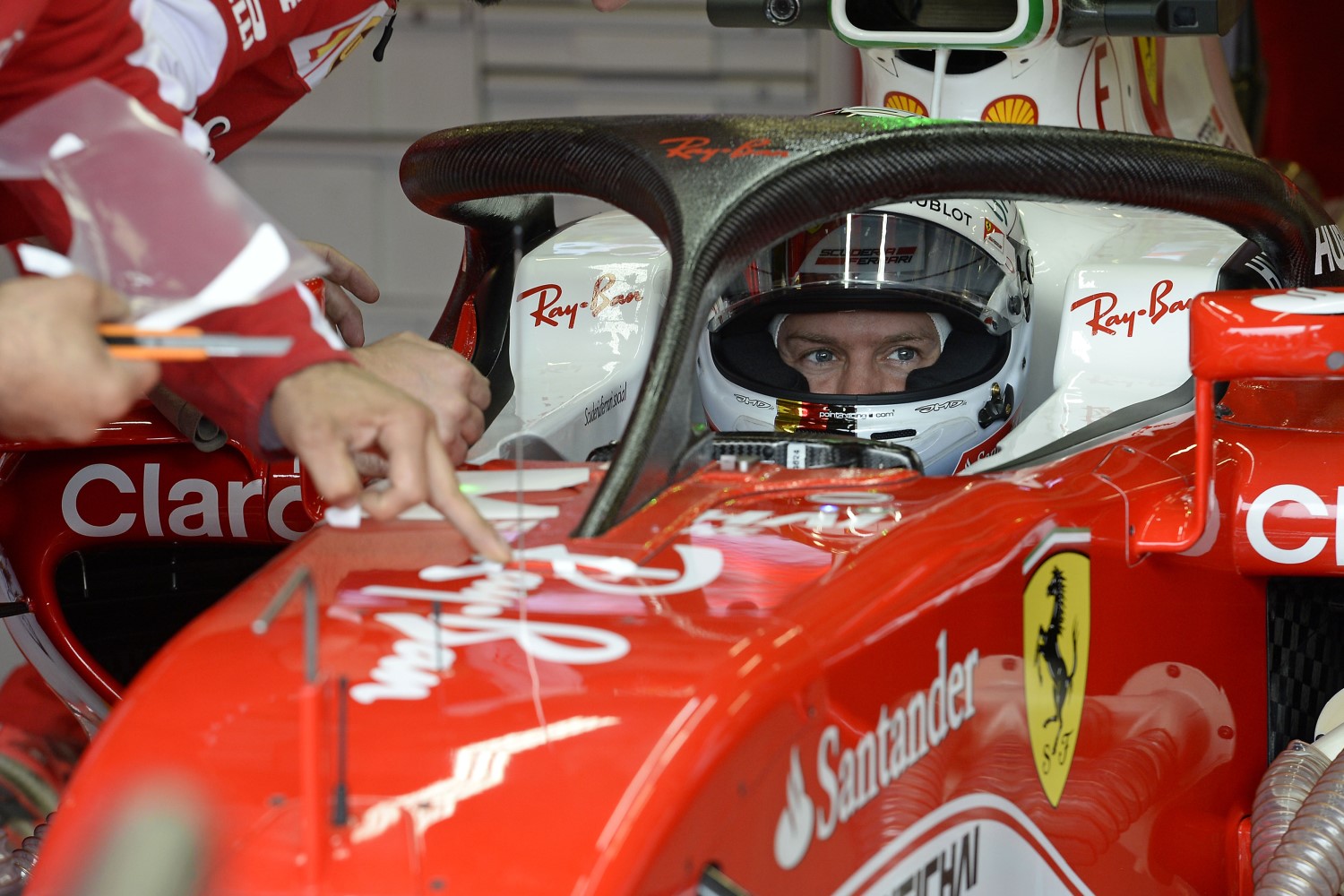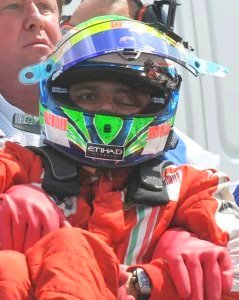Head protection in open cockpit cars
 |
| Head protection continues to be a topic of debate for IndyCar and F1. |
IndyCar, along with the FIA and ICMS, have been looking at the issue of drivers head protection for years. Well-publicized tragedies, most notably the death of Justin Wilson, along with the interest in sports head injuries in general have placed the issue on front burner attention lately. Much ado – both in the media as well as the not-so-social media – has been made lately about head protection for open cockpit race car drivers. Much of what has been said is wrong. And quite frankly, there is a good chance that the latest idea by the FIA for F1 is wrong too, at least for IndyCar.
F1, via the FIA, is poised to use a "halo" device to protect drivers' exposed heads in 2018, after experimenting with both canopy and raised windshield designs. The current specification is that it be able to support 15x the weight of the car (essentially another roll bar) and that the center support – squarely in front of the driver – be no more than 2/3-in. thick. It's a done deal.
The FIA started its current round of research in 2011, looking at incidents in FIA's various series as well as IndyCar, over the last couple of decades. They modeled designs using a baseline impact with a 20 kg tire/wheel assembly (around 44 pounds) traveling at 225 kph (140 mph). In a press conference ahead of the Hungarian Grand Prix in Budapest, they laid out their case, complete with lists of incidents that they analyzed in order to design protection for the drivers' heads.
See Video Below
I too reviewed the list of CART, USAC, IndyCar, IRL, and F1 fatalities of from the 1970's forward, looking for lives that might've been saved by the proposed devices – halo, enhanced windscreen, combination windscreen and halo, and full-on "F16 canopy". What I saw was… discouraging. Putting it bluntly, none of the options would have prevented most, if any, of the fatalities in the past.
 |
| Vettel trying the Halo |
Even the FIA itself claims that only 2 lives would've been saved with its new halo device, and neither if F1: Henry Surtees in F2 in 2009, and Justin Wilson in IndyCar in 2015. However, I'm not even sure that the new halo design would even do that much.
First, it's helpful to look at the incidents of "head injury" where we can hopefully all agree that none of the proposed head protection devices – halo, canopy, windscreen and hybrid halo+windscreen — would've made a difference:
• None of the devices mentioned above prevent Basilar Skull fractures, the kind of injury that killed Scotty Brayton, Jovy Marcelo, Greg Moore, Gonzalo Rodriguez and others. Dale Earnhardt Sr, of course, had a roof over his head. This was addressed by a combination of HANS devices as well as SAFER barriers. Robert Hubbard has probably saved more motor sports lives with his HANS work than any other person in auto racing history.
• None of these will prevent the "Second Concussion" issue. Drivers who've had previous head injuries are much more prone to another injury, even without direct contact to the head. The retirement of Dario Franchitti definitely goes into this category. This is why journalist Ed Hinton asked for Dale Earnhardt Sr.'s autopsy report. Perhaps this contributed to James Hinchcliffe's head injuries in his 2015 crash.
• No head protection in the world will work when the underlying cockpit structure is badly compromised. Dan Wheldon's head struck a fence pole that sliced into the side of the vehicle, a situation hopefully addressed by the new 2018 IndyCar design. Jeff Krosnoff's CART car hit poles and trees at Toronto. Jules Bianchi hit a crane that was lifting a car from the track, crushing his roll hoop before his helmeted head made contact with the machine.
• Bianchi also suffered from Diffuse Axonal injuries. In such cases, the brain smacks against the sides of the skull, separating brain tissue from other brain tissue that it needs to talk to. Such injures which can happen even if no direct impact with the head happens — shaken baby syndrome comes to mind — caused when the body stops too suddenly. Perhaps this is why the FIA says that it's uncertain if the new halo would've helped Jules.
So what kind of injuries are we trying to prevent with these devices? As far as I can see, there are 2 kinds:
• Blunt force trauma. A tire comes loose, or debris from a crash drops from the sky (more on Justin Wilson's tragedy in a bit), hitting the driver's head. Cristiano Da Matta hit a deer at Road America. Henry Surtees died when he hit a loose tire / suspension assembly in 2009.
 |
| Felipe Massa follwoing his accident at Budapest in 2009. |
• Piercing / penetrating injuries. Aryton Senna died when a bit of his suspension penetrated his helmet. Felipe Massa got a 800 mg spring to the face at 250 kph, but obviously he lived to race another day. James Hinchcliffe hit a end plane from a wing in 2014.
But let's be honest here. As Mario Andretti pointed out to me, blunt force and piercing injuries are rare – "Very rare." "One in a million" was Da Matta's term. While that's no consolation when a driver gets hurt, the fact remains that surprisingly few open cockpit drivers get hurt in this way.
In some of the cases above, the answer was a solution "somewhere else". The "lessons learned" from the other incidents pointed to solutions far away from the driver's head. For instance:
• Mark Donohue died, it is thought, when his head contacted a fence post during the crash. Patrick Depailler died of head injuries when his car vaulted the Armco. In those two cases (along with the case of Krosnoff , Pryce and Senna), tracks addressed this possibility with improved runoff areas, with impressive results.
• After Massa's accident, as well as Hinchcliffe's 2014 accident, helmet standards were changed to prevent such injuries. As ICMS Executive Director Don Andrews quipped, "This is why you have to buy a new helmet every few years."
• Likewise, wheels were long ago tethered in both F1 and IndyCar, addressing a lot of safety concerns about errant tires attached to sharp suspension bits, and those probably would've saved Surtees, Senna and Roper's lives. In the aftermath of Wilson's death, IndyCar extended tethers to body bits as well, hopefully preventing that tragedy in the future.
Rarely is "safety" a one-device, or one-idea thing. And rarely is it without some drawbacks that have to be addressed. The concern is – voiced by drivers from Mario on down – that the current proposals have their problems. "It's got to be all positive," commented Mario. "We can't introduce more negatives into the thing. And you can quote me on that!"
And yes, the halo has limitations and issues.
First, by the FIA's admission, the piercing injuries are not adequately addressed. For instance, in Senna's case – which went unmentioned in the press conference — a halo would've only worked if suspension bits hadn't gone around / under the halo. It is unclear if Massa's spring, and other smaller bits of debris, would've been affected by this device. James Hinchcliffe – who suffered a debris concussion in 2014 Grand Prix of Indianapolis – told us that he didn't think that the halo would've prevented his concussion in the Grand Prix event. "The wind screen and canopy, definitely (would've helped) but not the halo."
[adinserter name="GOOGLE AD"]Second, the halo is probably not strong enough. The FIA could only point to Surtees and Wilson as being saved by this device, and concluded that would've helped in other incidents – many of which did not include injury or death. Surtees did indeed strike a loose wheel assembly, but it weighed 29 kg, and he was going 120 mph, putting it 5% over the FIA test standards (41,000 joules for Surtees versus 39,000 joules for the test). For comparison, an AK-47 round packs 2,900 joules of kinetic energy.
The Justin Wilson claim is also doubtful. The halo has severe issues that make it unsuitable for IndyCar, starting with speed. Impact energies square with velocity (KE = 1/2 MV^2, KE=Kinetic Energy, V=velocity, M=mass), and IndyCar routinely races at speeds far greater than the FIA test speed of 140 mph. Justin Wilson was probably driving at or near 200 mph at the time of his accident. Strike anything over 20 pounds at 200 mph and you've exceeded the FIA's test standards. It is not uncommon for teams to put ballast in the nose cone of a car – the bit that killed Justin — perhaps as much as 25 pounds, adding to the part's 10-pound natural weight.
And all of this is before we consider the shape and mass of the object being struck. Striking a 10 pound axe head, with sharp end towards the driver, probably will have different results than striking a 10 pound pile of cotton balls, for instance. That hypothetical AK-47 bullet (above) would no doubt prove problematic for the carbon fiber halo as well. And a nose cone is radically different than a runaway tire.
 |
| AR1 caught up with Mario Andretti recently at Mid-Ohio. The racing legend pointed out the unsuitability of the halo for banked oval tracks |
I asked Mario Andretti if anything that is now proposed – halo, windscreen, canopy, etc — would have saved Justin Wilson. Andretti doesn't believe the F1 "halo" solution would've saved him, nor would the extended "windshield" tried in F1, partially because of the speeds involved.
And as Mario pointed out, a halo is not suitable to high banked tracks like Texas, Iowa, and Gateway. On a big oval you can't look "left" to see around the corner. Rather, you look "up" due to the banking. And "up" is exactly where the halo resides. Oh, and if you didn't like the looks of the "Kardashian" butt pods on the current car, you'll hate the look of the halo. "We can't use the halo in IndyCar, and the people in F1 all hate it," continued Hinchcliffe in my conversation with him.
But Hinchcliffe likes the extended windscreen idea. This was tried this year in F1, but discontinued in less than one practice session after it made Sebastian Vettel dizzy. The FIA couldn't get it to meet their goal of deflecting 20 kg at speed (the "wheel test") either, and had concerns about "clag", fogging, etc. Still, Hinchcliffe believes these issues could be worked out. He hated that the idea only got a single practice trail in F1 with one driver, and believes that if F18 pilots can land a plane on a carrier with a Lexan canopy, that sanctioning bodies can figure out visibility problems with the wind screen and canopy.
In fact, the FIA concluded its Hungarian press conference by spilling the beans on IndyCar's current thoughts. While it designed the halo "specifically for Justin's accident," they continued: "And equally, this is why we collaborated with IndyCar who is looking at windscreen solutions." And in fact, a few days ago, IndyCar announced that it would pursue testing of a windscreen this winter.
